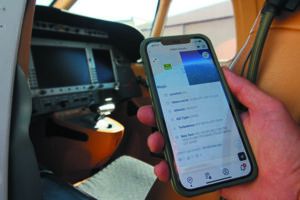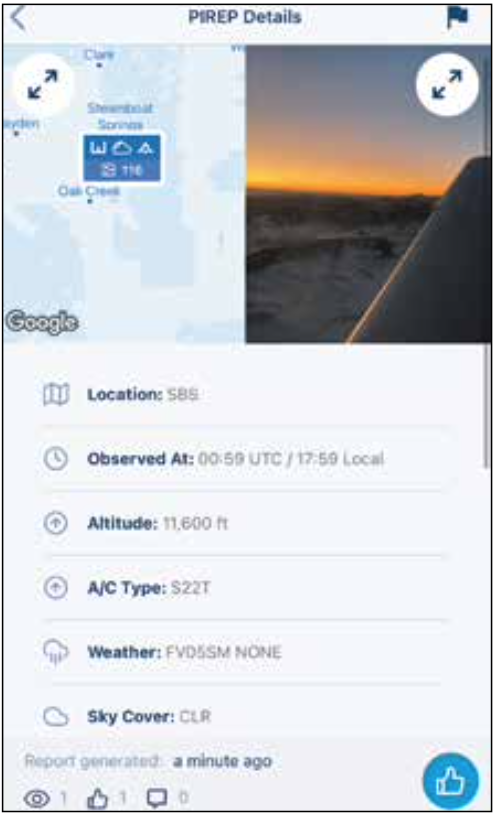That high-quality smartphone pic you shot of the overcast layer as you climbed on top makes for a good Facebook post, but it’s even better as part of a PIREP. That’s what a new app called Virga does. Think of it as the social media of PIREPs, and it’s growing users for good reason.
MORE REPORTING
That’s the idea behind Virga’s concept, an idea that company founder Matt Lane came up with after getting stuck on top of an overcast over Colorado in his Cirrus. Not yet instrument rated at the time (he’s since worked his way into a jet), Lane couldn’t get real-time PIREPs because there simply weren’t any reported.
“I was in a new G1000-equipped Cirrus with ADS-B and SiriusXM, and all the PIREPs datalinked to the displays were in areas I wasn’t,” Lane said. He also said that some pilots are intimidated by submitting PIREPs simply because they don’t want to take up the VHF radio bandwidth to do so, especially if the report is reasonably routine. For that reason, useful turbulence reports—even if it’s moderate chop—often don’t get reported. Lane believes Virga relieves the stress of reporting a condition that a pilot may otherwise think is insignificant, all in real time. The PIREP that someone submitted an hour ago to aviationweather.gov may be old news.

Worth mentioning is that PIREPs shared on Virga are synced to aviationweather.gov, and PIREPs submitted the traditional way are synced onto Virga’s Google map page. See the images top and bottom. It’s up to app makers (Garmin Pilot and ForeFlight, as examples) to display them. The idea of Virga is a bigger picture of every PIREP it can find.
And yes, the FCC prohibits the use of cellphones in flight because of network gridlock concerns, but the FAA says it’s up to the pilot to decide which portable devices are safe to use without interfering with onboard electronics. We’ve all given our smartphones the nod, even if they actually might cause minor issues we don’t know about.
And then there’s the issue of actually having a useful signal to send a text, let alone a good-sized photo file that the latest devices so nicely capture. In some cases you might have usable service into the low teens, but in other places the coverage is much lower. The app has been optimized to send the text bursts first, and the images second. So you might see just a white placeholder until the photo makes it in with more bandwidth. The app is also smart enough to hold the PIREP until there’s cell coverage, and tagged according to the observed time.
Of course, the system would be even more useful with a satcom system like Garmin’s InReach products, to name one example—especially for pilots in the Alaska bush and other remote areas without cell coverage.
You can set alerts based on geographical location and altitude so you get a push notification when a PIREP is submitted in that area, plus you can comment (and Like, of course) on PIREPs. That’s helpful for commenting on submitted ride reports. What may be light chop for a Citation could be moderate for a 182, for instance.
KEEP IT CLEAN, NOW
Since photo sharing gives the app a social media feel, Virga has built-in policing so that users can flag inappropriate content. And what may be interesting to one pilot may be useless as a PIREP to another without having more of a baseline condition report as a supplement, as the FAA does with its cameras. Icing shots, as you’d imagine, are popular, but so are shots of thunderstorms and snow.
Virga cofounder Ben Barash, who flies a Honda Jet, had a good point that arbitrary reports of “snow or thunderstorms in the vicinity” aren’t exactly helpful, but a real-time photo of a buildup 10 miles away from the field sure is.
The app is free, for now, and at press time works on iOS with Android coming. Visit www.flyvirga.com.





